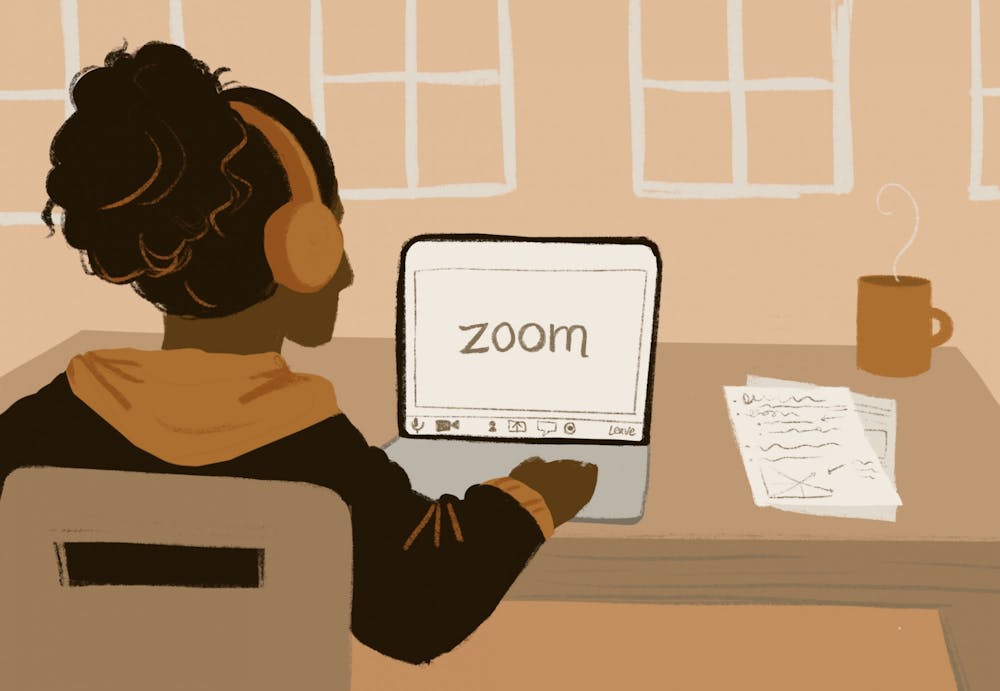With a full semester of hybrid and virtual learning under their belts, students have found both challenges and silver linings in adapting to new course formats.
Many Duke courses used hybrid or virtual learning models this fall in response to the need for distance during the COVID-19 pandemic. Some students have enjoyed the extra flexibility that new course formats have offered, while others have struggled with paying attention and having meaningful interactions in online courses.
For some students, pre-recorded lectures allowed them to learn at their own pace and return to lessons for clarification and test preparation.
“I find it very helpful content-wise to be able to pause lectures,” said junior Bennett David. “I am a slower learner like that, so it helps me rewind and engage with the content more.”
Virtual classes also cut down the time students spend going from one class to another.
“I’m now more independent with my time, which was something I appreciated coming out of high school,” first-year Gurnoor Majhail said.
Online office hours, take-home labs and close connections with professors made hybrid classes and virtual learning models more engaging for some students. Sophomore Ying Yu admired the efforts her biology professors made to build personal relationships with students and preserve the quality of the course despite the virtual format.
“The teaching team made the lectures engaging even though they were online, and they managed to make the rest of the lab that we were doing still a possibility for us,” Yu said.
However, hybrid learning also presented students with new challenges.
“It’s both a blessing and a curse,” David said. “I can move things around exactly as I want but I found it more difficult to stay on task.”
Senior Ivy Jiang also found online lectures harder to engage with. “I would sometimes find myself on mute, video off, not paying attention at all,” Jiang said.
The socially distant lectures and online classes also left some students feeling socially unfulfilled. For Majhail, it was difficult to meet new friends and have collaborative interactions in class through a screen.
“There was less incentive to participate, and spontaneous conversations were a lot less frequent,” Majhail said.
To address these challenges, some students adopted new habits and adapted their learning processes. “I found myself having to write my own schedule,” Yu said, “I had to keep track of which live lectures I missed and find time to take notes outside of the time they designate for you.”
“I never do work on my bed. I only do work at my desk. Having different spheres of my life even if it's a small space has been really important for me,” Majhail said.
Some students hope that certain institutional and personal changes that have occurred in response to the pandemic will be here to stay afterwards.
“Zoom meetings are super convenient because you don’t have to go through all the trouble of physically meeting up or reserving a space,” Jiang said.
Yu said she hopes teachers continue to record their lectures after the pandemic, so students can easily rewatch and learn things they missed in class.
This spring, Duke plans on continuing with a mix of in-person, hybrid and virtual classes. Students and professors will continue adapting to this new form of learning, but many students anxiously await a return to normalcy.
“It makes me sad that my last semester will be like this,” Jiang said. “I miss the senior events that would’ve happened. At least the Class of 2020 had their 100 days celebration in the fall semester and we didn’t get any of that at all.”
On the other hand, Majhail hopes to experience a normal year in college and awaits a time when students can mingle more easily.
“I’m super excited to have new conversations with different people and be able to interact with new people,” Majhail said.
Get The Chronicle straight to your inbox
Signup for our weekly newsletter. Cancel at any time.

